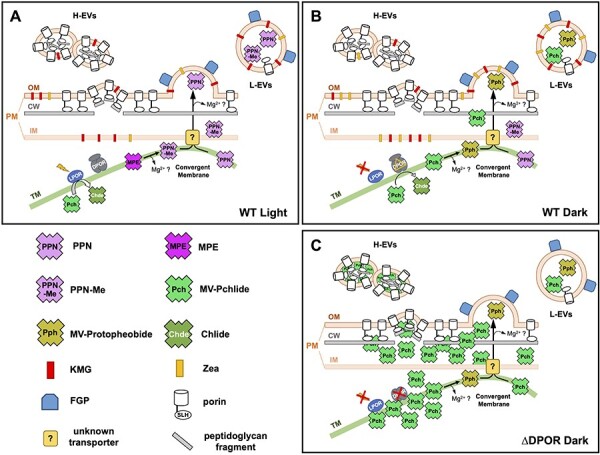Fig. 8.

Models for the formation of two types of EVs in L. boryana cells. (A and B) L. boryana WT secretes two types of EVs under light (A) and dark (B) conditions: L-EVs, whose major protein and pigments are FGP and carotenoids, respectively; and H-EVs, whose major protein is porin isoforms and less pigment per protein than L-EVs. In WT, free Chl intermediates accumulated intracellularly are loaded into only L-EVs and secreted out from the cells. Under light conditions, PPN and PPN-Me are mainly secreted out of the cell (A). Whereas, in the dark, MV-Pchlide accumulates in the TM due to the rate-limiting step of the DPOR reaction step or a partial inhibition of DPOR, and it is secreted mainly as MV-Protopheobide via L-EVs (B). An unknown transporter of Chl intermediates from TM to IM is shown. This transporter could be present in the convergent membrane. L-EV-mediated secretion could alleviate the accumulation of Chl intermediates within the cell. (C) L. boryana ∆DPOR also secretes two types of EVs. During the dark growth of ∆DPOR, a large amount of MV-Pchlide accumulates in the cells. Such abnormally accumulated MV-Pchlide could stimulate the formation of H-EVs, and MV-Pchlide, and MV-Protopheobide secreted by H-EVs (Usui et al. 2022). Since the carotenoid contents of ∆DPOR under dark conditions have not been determined, the notation of carotenoids is not shown.
